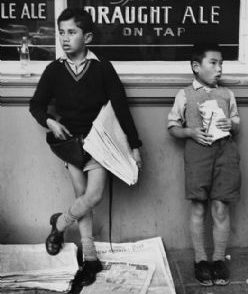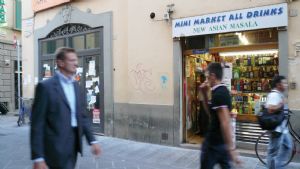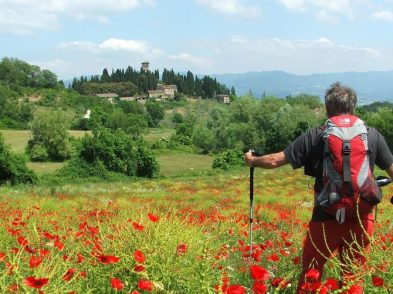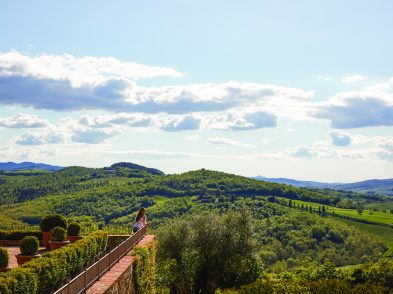The next time you wake up wondering if there’s more to Italy than Florence, don’t roll over and go back to sleep. Roll out of bed instead. Breeze through the bathroom, jump into your clothes, down some coffee and run to catch the 8:29 ICplus 580 Tacito train to Modena. It will get you there by 10:06. At 12:30, when I take you to a place that is heaven on earth, the foodies among you will be crying, ‘Why did it take me so long to discover Modena?’
But there are hours to go before 12:30. So, back to the train. You’re staring out the window, trying to remember what you connect Modena with. Music? Yes, it was Pavarotti’s hometown. Cars? Yes, think Ferrari, Bugatti, Maserati and Lamborghini. Food? Yes, Signor Telesforo Fini opened his first gourmet shop here in 1912, where he sold not only aceto balsamico but all kinds of delicacies that have since become stars sparkling in the gastronomic firmament.
When you arrive in Modena, use your feet to get to the centre. It’s not far away, and the walk is more fun than trying to figure out which bus to take. Walk straight out of the station and cross the viale Monte Kosica. Turn left into via S. Martino, which leads to corso Vittorio Emanuele. Turn right and head towards the Palazzo Ducale. At corso Cavour, which runs along the rear of the Palazzo Ducale, turn right and take the first street left, along the flank of the Palazzo Ducale. Keep going straight ahead and you’ll arrive at via Emilia, which runs east-west and cuts Modena into a northern and southern half. All the significant monuments are no more than a short stroll from the via Emilia, and some are right on it.
Modena’s history begins in antiquity, but the two periods that left the most enduring mark on the city are the Middle Ages and the seventeenth-eighteenth centuries. Modena was ruled by the bishops of the Church until 1135; it was an autonomous comune between 1135 and 1288, when it came under the rule of the Ferrarese Este family. In the seventeenth and eighteenth centuries, it was the principal seat of the Este Dukes of Modena and Reggio. As a matter of fact, the Este stayed in power, with brief interruptions, until the nineteenth century. And the Dukes of Modena are still around: the present one, Archduke Lorenz of Austria-Este, is the son-in-law of King Albert II of Belgium.
Modena’s most beautiful and imposing medieval monument is without doubt the cathedral, just off via Emilia. It was begun in 1099 on the site of two earlier churches. In the interior, brick walls and the red marble pavement give the space an unforgettable ruby glow. The portals on the exterior facades are impressive and worth a careful look. Along the north side of the cathedral stands the bell tower, the Torre Ghirlandina (built 1261-1319), which had both a religious and civic function since it also served as a watchtower.
In 1634, Francesco I d’Este constructed the sprawling Palazzo Ducale. You’d expect to find the local museums here, wouldn’t you? But instead, the Palazzo Ducale is the seat of a prestigious military academy. The painting gallery, the Galleria Estense, is housed in a building constructed in 1771 as a residence for the poor! It stands at the western edge of Modena and is now known as the Palazzo dei Musei. When you walk in to the atrium and cast your eyes over the elegant and well-designed spaces, you can’t help but compare it to our time-over 200 years along the road of so-called progress-when poor people are boxed up in depressing housing projects. The Gal-leria Estense contains the art collected by the Este dukes over the centuries, including paintings by Correggio, Guercino, Guido Reni, Velasquez and El Greco. Pride of place is held by Bernini’s bust of Duke Francesco d’Este.
It’s now 12:30. If you’ve been trailing through the museum, gallop back into the centre, to the Piazza Grande behind the cathedral, and look for the mercato coperto (covered market) on via Albinelli. It’s smaller than Florence’s mercato di San Lorenzo, but infinitely more enticing. And no wonder, since gastronomy is as much a symbol of Modena as fashion is of Florence. At the delicatessen counters, you will be in an agony of indecision about which olives, which salami, which prosciutti and which cheeses to buy.
Modena’s gastronomic links are stronger with northern than southern Italy, and you’ll see things never encountered in Florence. Many of the cheeses come from Piedmont, for example. The breads, too, are different from the Tuscan varieties. If the weather is pleasant, I suggest that you assemble the most divine picnic lunch you’ve ever dreamt of eating and look for an attractive bench in the pedestrian zone. Provided you take care not to litter, no one could possibly object. Non-picnickers should use their nose and eyes to find a trattoria patronized by the local workforce. The food is bound to be tasty and the price reasonable. Buon appetito!
Cathedral: closed between 12:30 and 3:30
Galleria Estense: open 8:30 to7:30, closed Mondays
Mercato coperto: open 6:30 to 2:00, closed Sundays







